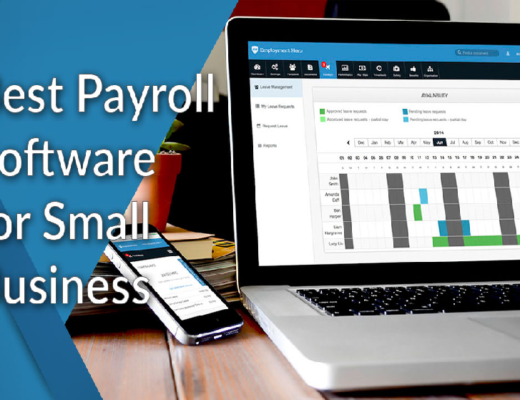In today’s rapidly evolving business landscape, data has become a powerful asset driving strategic decision-making. As businesses strive to stay ahead of the competition, the demand for quick and insightful analytics has never been higher. Self service business analytics has emerged as a transformative solution, empowering organizations to harness the full potential of their data. In the United States, the adoption of self-service data analytics has gained significant momentum, revolutionizing the way companies analyze and interpret their data for better decision-making.
The Evolution of Self-Service Business Analytics
1.1 From Traditional to Modern Analytics
The traditional approach to analytics often involved specialized teams or data scientists who were responsible for extracting insights from data. This process was time-consuming and limited the accessibility of valuable information to a select few within the organization.
1.2 Rise of Self-Service Analytics
USA Self service data analytics represents a paradigm shift, putting the power of data directly into the hands of business users. With intuitive tools and user-friendly interfaces, individuals across various departments can now analyze data, create reports, and derive meaningful insights without the need for advanced technical skills.
Key Components of Self-Service Analytics
2.1 User-Friendly Interfaces
One of the defining features of self-service analytics is its user-friendly interface. Intuitive dashboards and drag-and-drop functionalities allow even non-technical users to interact with and analyze complex datasets effortlessly.
2.2 Data Visualization Tools
Visual representation of data is crucial for understanding complex trends and patterns. Self-service analytics platforms often include robust data visualization tools, enabling users to create compelling charts, graphs, and dashboards that enhance data comprehension.
2.3 Data Integration Capabilities
Effective analytics require the integration of data from various sources. Self-service analytics platforms streamline this process by providing seamless integration capabilities, allowing users to combine and analyze data from disparate sources to gain a comprehensive view of their business operations.
The Impact of Self-Service Analytics on Decision-Making
3.1 Real-Time Decision-Making
Self-service analytics enables real-time decision-making by providing instant access to up-to-date data. This agility is invaluable in today’s fast-paced business environment, allowing organizations to respond promptly to market changes and emerging opportunities.
3.2 Democratization of Data
By breaking down traditional data silos, self-service analytics democratizes data within organizations. Decision-makers at all levels can access and analyze data relevant to their roles, fostering a more informed and collaborative decision-making culture.
3.3 Empowering Business Users
Self-service analytics empowers business users to take control of their data without relying on IT or data science teams. This empowerment not only accelerates the decision-making process but also encourages a data-driven mindset across the organization.
Challenges and Considerations
4.1 Data Security and Governance
While self-service analytics provides numerous benefits, organizations must address concerns related to data security and governance. Implementing robust security measures and ensuring compliance with data regulations are critical aspects of a successful self-service analytics strategy.
4.2 User Training and Adoption
The success of self-service analytics relies on user adoption and proficiency. Organizations need to invest in comprehensive training programs to ensure that users, regardless of their technical background, can maximize the potential of the analytics tools at their disposal.
Case Studies: Successful Implementations in the USA
5.1 Retail Industry
Several retail giants in the USA have embraced self-service analytics to gain insights into consumer behavior, optimize inventory management, and personalize customer experiences. By empowering store managers and marketing teams with analytics tools, these companies have achieved significant improvements in operational efficiency and customer satisfaction.
5.2 Healthcare Sector
In the healthcare sector, self-service analytics has played a crucial role in improving patient outcomes and operational efficiency. Healthcare providers use analytics tools to analyze patient data, optimize resource allocation, and identify trends that can inform better treatment protocols.
The Future of Self-Service Analytics
6.1 Artificial Intelligence and Machine Learning Integration
The future of self-service analytics will likely see increased integration with artificial intelligence (AI) and machine learning (ML) capabilities. This integration will enhance the predictive and prescriptive analytics functionalities, providing users with more advanced insights and recommendations.
6.2 Cloud-Based Solutions
Cloud-based self-service analytics solutions are gaining popularity due to their scalability, flexibility, and cost-effectiveness. As more organizations migrate their data to the cloud, the demand for analytics tools that seamlessly integrate with cloud platforms is expected to grow.
Overcoming Implementation Challenges
7.1 Collaboration between IT and Business Units
Successful implementation of self-service analytics requires a collaborative effort between IT and business units. IT teams play a crucial role in ensuring data security, governance, and system integration, while business units provide insights into the specific analytics needs of their departments. Establishing effective communication channels between these two groups is essential for a seamless implementation process.
7.2 Scalability Considerations
As organizations grow, their data volumes and analytics requirements may evolve. It is crucial to choose self-service analytics solutions that can scale with the organization’s needs. Scalability ensures that the analytics infrastructure can accommodate increasing data complexity and user demands without compromising performance.
Industry-Specific Applications
8.1 Financial Services
In the financial services sector, self-service analytics is used to detect fraud, assess risk, and optimize investment portfolios. Financial analysts can easily access and analyze market data, enabling them to make informed decisions in real time. The democratization of data in this industry has led to more agile financial strategies and enhanced compliance measures.
8.2 Manufacturing and Supply Chain
Manufacturing companies leverage self-service analytics to monitor production processes, identify bottlenecks, and optimize supply chain operations. By providing real-time visibility into key performance indicators, manufacturers can enhance production efficiency, reduce costs, and respond swiftly to changes in demand.
The Role of Data Literacy
9.1 Fostering a Data-Driven Culture
Successful implementation of self-service analytics goes hand-in-hand with fostering a data-driven culture within an organization. This involves not only providing the tools but also promoting data literacy among employees. Training programs and initiatives to enhance data literacy ensure that users can confidently and effectively leverage self-service analytics tools.
9.2 Continuous Learning
Given the rapid evolution of technology and analytics methodologies, fostering a culture of continuous learning is paramount. Organizations must invest in ongoing training and development programs to keep users abreast of new features, best practices, and emerging trends in the self-service analytics landscape.
Collaboration between IT and business units
The landscape of self-service business analytics in the USA is dynamic and continually evolving. As organizations increasingly recognize the importance of data-driven decision-making, the adoption of self-service analytics is expected to become more widespread. Overcoming challenges related to data security, user training, and collaboration between IT and business units will be crucial for ensuring the successful implementation of self-service analytics initiatives.
Conclusion
The rise of self-service business analytics in the USA marks a significant shift in how organizations leverage data for decision-making. By empowering users across various departments to analyze and interpret data independently, self-service analytics is fostering a data-driven culture that is essential for staying competitive in today’s business landscape. As technology continues to evolve, the future of self-service analytics holds the promise of even more advanced capabilities, further revolutionizing the way organizations harness the power of their data.




